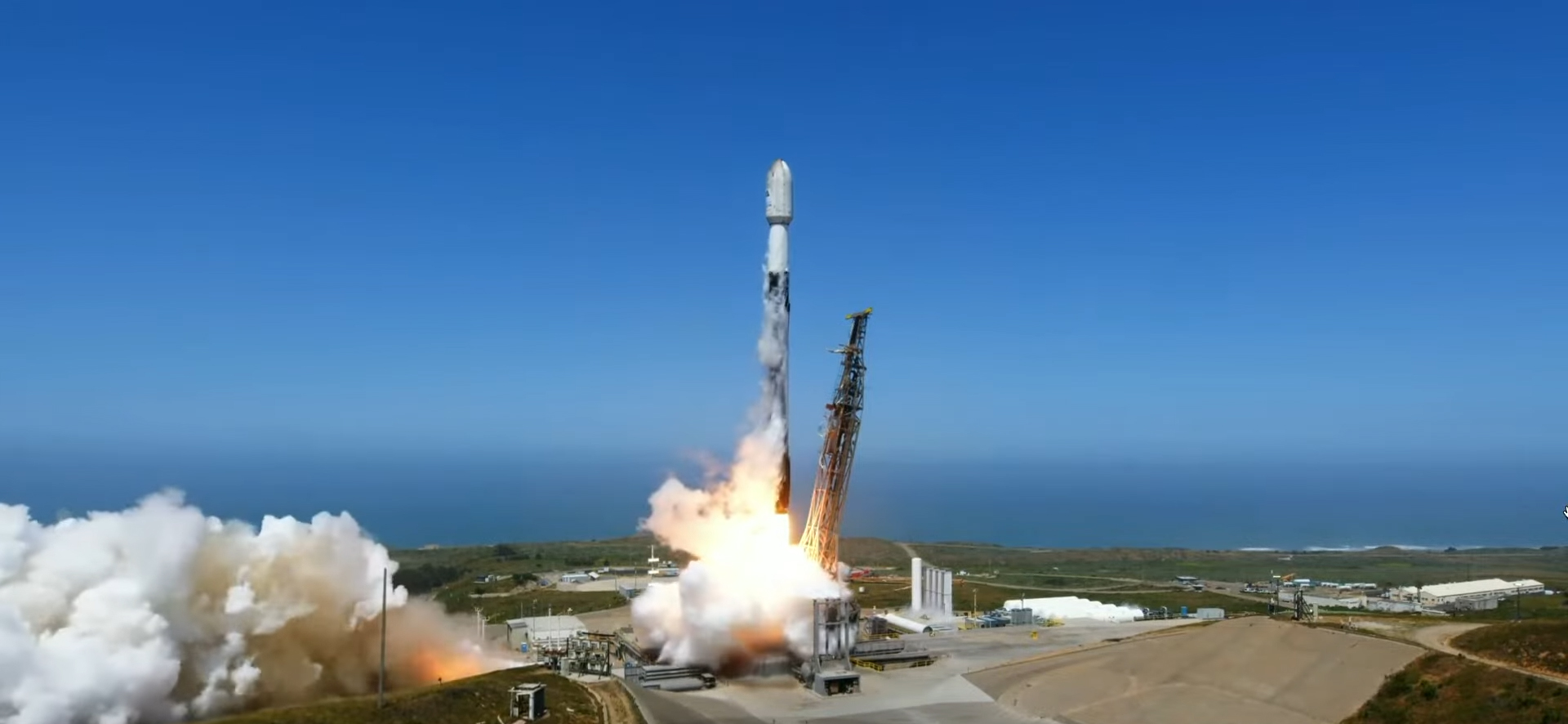
SpaceX successfully launched two next-generation Earth observation satellites from Space Launch Complex 4 East at Vandenberg Space Force Base in California at 11:36 am PT.
These two satellites, built by Maxar Technologies, are the first of six currently planned to replace older observation satellites. They were deployed into a Sun-synchronous orbit at around 13 and 16 minutes after lift-off, which was later confirmed by SpaceX once the Falcon 9 second stage came back into range of a ground station.
SpaceX will also launch the next four satellites in the coming months as Maxar continues to replace older generation satellites. The four will launch from Florida. These two launch sites give Maxar access to multiple orbit types and better coverage of the globe.
SpaceX once again hit the 20-launch mark with the Falcon 9 that launched this mission, this time with Booster 1061. Due to a lightweight payload, B1061 was able to perform a boost backburn and touchdown at Landing Zone 4, a few hundred feet away from the launch pad.
Booster 1061 has now safely launched 8 humans (Crew 1 & 2), an ISS resupply mission, a NASA x-ray space observatory, 2 telecommunication missions, 2 Transporter rideshare missions, an Israeli ISI EROS C-3 recon satellite, the Korea 425 recon satellite, and 9 Starlink missions.
The second stage also featured the “stubby nozzle,” which SpaceX will occasionally use when it does not need the full performance of a full-sized vacuum nozzle.
SpaceX, as is usual now, also used flight-proven fairings, with one of the halves flying for the 16th time. This is fairly remarkable for this mission as the payloads feature highly sensitive optics, and SpaceX is now able to refurbish these fairings and ensure they do not contaminate the payloads they protect during atmospheric flight.
This isn’t the only flight today, as SpaceX is now looking to launch 23 Starlink, which will see Booster 1067 launch for the 19th time. That launch is currently scheduled for no earlier than 9:49 pm ET.


 CoinPedia News
CoinPedia News CoinPedia News
CoinPedia News CoinPedia News
CoinPedia News suncrypto.in
suncrypto.in TheCoinrise Media
TheCoinrise Media CoinPedia News
CoinPedia News BH NEWS
BH NEWS Optimisus
Optimisus DogeHome
DogeHome






















